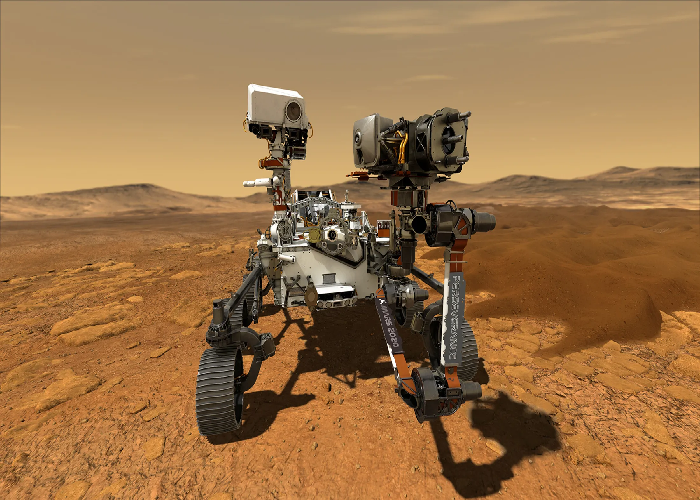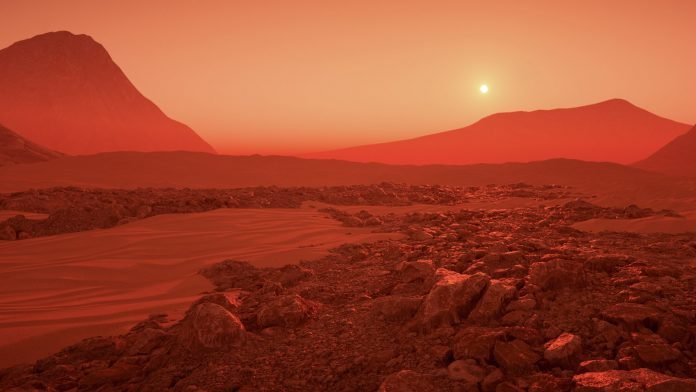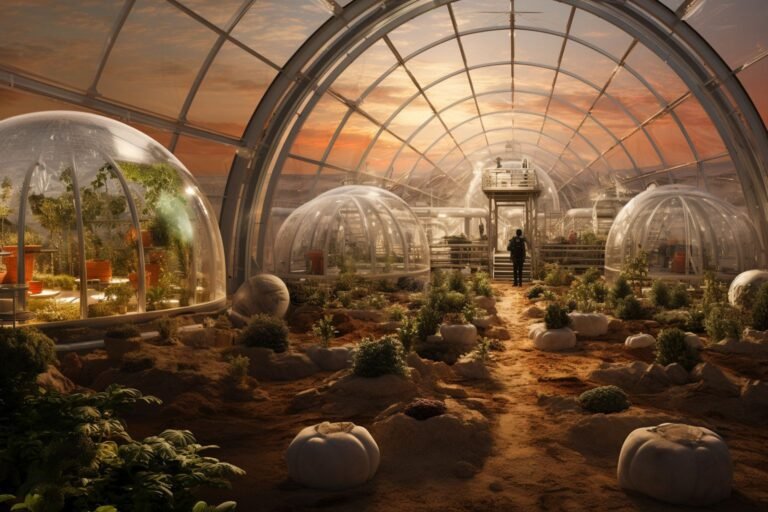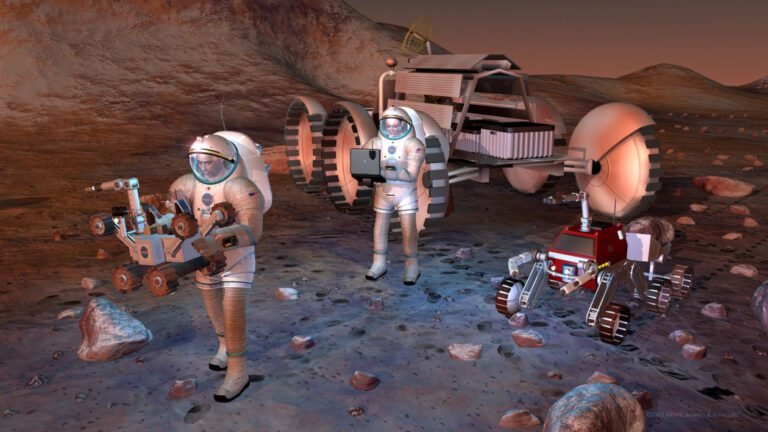5 Reasons To Explore Mars

The idea to explore Mars has captivated the imagination of scientists, engineers, and dreamers for decades. Beyond the red planet’s rust-colored surface lies a wealth of opportunities that could redefine our understanding of the universe and propel humanity into a new era of exploration.
Here are 5 reasons to explore Mars and why it is not just a dream, but a crucial step forward for humankind:

1. Scientific Discovery
Explore Mars is a cornerstone of scientific discovery and exploration, offering unparalleled opportunities to expand our knowledge of planetary science and potentially uncover clues about the origins and evolution of our solar system. Here’s a detailed exploration of why scientific discovery and exploration of Mars are crucial:
Advancing Planetary Science
Mars serves as a natural laboratory for understanding planetary processes and geology beyond Earth. By studying its surface features, geological formations, and atmospheric dynamics, scientists gain insights into fundamental questions about the formation and evolution of rocky planets. Mars’ similarities and differences with Earth provide critical comparisons that enhance our understanding of planetary evolution, climate change, and the potential habitability of other celestial bodies.
Unraveling Martian History and Climate
One of the primary objectives of Martian exploration is to decipher its geological history and past climate conditions. Mars’ surface preserves a record of ancient environments, such as evidence of past water flows, river valleys, and mineral deposits. By analyzing these features, scientists can reconstruct Mars’ past climate and assess its potential to support life, either in the past or potentially in subsurface environments today. Understanding Martian climate dynamics also contributes to our knowledge of planetary atmospheres and climate evolution in our solar system.
Searching for Signs of Life
Explore Mars is driven by the quest to determine whether life exists or ever existed on the Red Planet. While Mars is currently inhospitable to life as we know it due to its cold, dry, and radiation-exposed surface, there are intriguing possibilities for microbial life in protected subsurface environments. Rovers and future missions equipped with advanced instrumentation are designed to detect biosignatures—indicators of past or present life—to address one of humanity’s most profound questions about the existence of life beyond Earth.
Technology Development and Innovation
The challenges to explore Mars—such as long-duration space travel, landing precision, and resource utilization—drive technological innovation. Developments in robotics, autonomous systems, propulsion, life support systems, and materials science are essential for designing spacecraft, rovers, and habitats capable of surviving and operating in Mars’ harsh environment. These advancements have far-reaching implications for space exploration, commercial applications, and everyday technologies on Earth.
International Collaboration and Inspiration
The challenge to Explore Mars fosters international collaboration among space agencies, researchers, and industry partners worldwide. Projects like NASA’s Mars missions, ESA’s ExoMars program, and collaborations with other nations demonstrate the power of global cooperation in advancing scientific knowledge and achieving ambitious exploration goals. Moreover, Mars exploration inspires people of all ages, sparking curiosity, promoting STEM education, and encouraging future generations to pursue careers in science, technology, engineering, and mathematics.

2. Establishing a Human Presence
Human settlement and future space exploration on Mars represent ambitious goals that could redefine humanity’s future beyond Earth. Here’s a detailed exploration of why human settlement and future space exploration on Mars are significant endeavors:
Establishing a Human Presence Beyond Earth
Expanding Human Horizons: Establishing a human presence on Mars would mark a historic milestone in space exploration, expanding our reach beyond Earth and pushing the boundaries of human achievement. It represents the next step in our quest to explore and colonize other celestial bodies in our solar system.
Ensuring Planetary Resilience: Creating a sustainable human settlement on Mars could serve as a backup plan for humanity, ensuring our species’ resilience against potential threats to Earth, such as asteroid impacts, climate change, or other catastrophic events. It offers a potential off-world refuge and ensures the continuity of human civilization.
Technological Advancements: The challenges of establishing a human presence on Mars drive technological innovations across multiple disciplines, including spacecraft design, life support systems, habitat construction, resource utilization, and medical technologies. These advancements have applications not only in space exploration but also in addressing challenges on Earth, such as sustainable resource management and environmental conservation.
Scientific Exploration and Research Opportunities
Studying Mars’ Habitability: Living and conducting research on Mars would provide unprecedented opportunities to study the planet’s geology, climate, and potential for past or present life. Scientists could explore Mars’ surface and subsurface environments, analyze rock and soil samples, and investigate the possibility of microbial life forms.
Comparative Planetology: Mars offers a unique comparative laboratory for studying planetary evolution and climate dynamics. By comparing Mars’ geological features and atmospheric processes with Earth’s, scientists gain insights into fundamental questions about the origins and evolution of terrestrial planets and their potential habitability.
Overcoming Challenges of Martian Environment
Extreme Environment: Mars presents numerous challenges for human settlement, including low gravity, harsh surface conditions (e.g., extreme cold, radiation exposure), and a thin atmosphere composed mainly of carbon dioxide. Overcoming these challenges requires innovative solutions in habitat design, radiation shielding, food production, and psychological well-being of crew members.
Resource Utilization: Future missions to Mars aim to utilize local resources, such as water ice deposits and Martian soil, to produce life support materials (e.g., oxygen, water) and building materials (e.g., bricks made from Martian regolith). Developing these technologies is critical for achieving self-sufficiency and reducing reliance on Earth for resupply missions.
International Collaboration and Inspiration
Global Cooperation: Human settlement on Mars requires international collaboration among space agencies, private companies, research institutions, and governments worldwide. Projects like NASA’s Artemis program, ESA’s Aurora program, and collaborations with private space companies demonstrate the power of global cooperation in advancing space exploration goals.
Inspiring Future Generations: The vision of human settlement on Mars inspires people around the world, igniting curiosity, promoting STEM education, and encouraging future generations to pursue careers in science, technology, engineering, and mathematics. It fosters innovation, creativity, and a shared vision for humanity’s future in space.
Ethical and Legal Considerations
Planetary Protection: Ensuring that human activities on Mars do not contaminate or adversely affect potential Martian life forms or environments is essential. Planetary protection protocols aim to prevent biological contamination and preserve Mars’ scientific integrity.
Ethical Implications: Human settlement on Mars raises ethical questions about resource allocation, governance, and the long-term impact on both Martian and terrestrial ecosystems. Addressing these ethical considerations requires thoughtful deliberation and international consensus.
Human settlement and future space exploration on Mars represent audacious goals that hold transformative potential for humanity. By establishing a sustainable presence on the Red Planet, we expand our scientific knowledge, drive technological innovations, ensure planetary resilience, and inspire future generations to explore new frontiers.
While the challenges are formidable, the collective efforts of the global space community bring us closer to realizing the dream of becoming a multi-planetary species and shaping a future where humanity thrives beyond Earth.

Studying the climate and environment of Mars is a crucial aspect of planetary science that offers profound insights into the planet’s past, present, and future. Here’s an in-depth exploration of why climate and environmental studies on Mars are significant:
Understanding Martian Climate Dynamics
Understanding Martian climate dynamics involves analyzing a range of factors that influence the planet’s atmospheric and surface conditions. Mars experiences extreme temperature fluctuations due to its thin atmosphere, which cannot effectively retain heat. This results in temperatures that can vary widely between day and night, ranging from about -125°C (-193°F) at the poles during winter to a maximum of 20°C (68°F) at the equator during summer.
The Martian atmosphere, composed primarily of carbon dioxide, is over 100 times thinner than Earth’s, contributing to its inability to support significant weather patterns like those on Earth. Seasonal changes on Mars drive the formation and sublimation of polar ice caps, composed of water and dry ice (frozen carbon dioxide), creating complex interactions between the atmosphere and surface.
Dust storms, which can engulf the entire planet, are another key feature of Martian climate dynamics, influencing temperature and atmospheric pressure. Understanding these factors is crucial for exploring Mars’ potential for past or present life and for planning future missions and human exploration.
Investigating Past Climate and Geological History
Investigating Mars’ past climate and geological history involves analyzing a variety of evidence to reconstruct the planet’s ancient environmental conditions. This research relies on data from rover missions, orbiters, and landers that have provided insights into Martian geology and atmospheric conditions.
Key to this investigation is the study of Martian surface features such as valleys, riverbeds, and lake sediments, which suggest that liquid water once flowed across the planet’s surface. Instruments on Mars rovers, like the Curiosity and Perseverance rovers, analyze rock formations and soil samples to identify minerals and chemical signatures indicative of past water activity. Additionally, orbital observations from spacecraft like Mars Reconnaissance Orbiter provide high-resolution imagery of surface features and atmospheric conditions, revealing evidence of ancient climate patterns and volcanic activity.
The analysis of Martian ice caps and layers of sediment also offers clues about historical climate changes and atmospheric composition. By piecing together this data, scientists aim to understand how Mars transitioned from a potentially habitable environment to its current cold and arid state, shedding light on the planet’s geological history and its potential for past or present life.
Implications for Habitability and Life
Habitability Assessments: Understanding Mars’ climate and environmental conditions is crucial for assessing its potential habitability, both in the past and present. By studying factors like temperature fluctuations, radiation levels, and the availability of water and nutrients, scientists can determine if Mars could support microbial life or potentially sustain human exploration and settlement in the future.
Biosignatures and Astrobiology: Mars exploration missions search for biosignatures—indicators of past or present life—preserved in Martian rocks, soils, or subsurface environments. Studying Mars’ climate and environmental history helps identify potential habitats where life could have existed and guides the search for evidence of microbial life on the Red Planet.
Technological and Methodological Advances
Remote Sensing and In-situ Measurements: Mars missions utilize a combination of remote sensing instruments (e.g., orbiters, rovers) and in-situ measurements (e.g., landers, sample analysis) to study Mars’ climate and environment comprehensively. Advances in sensor technology, data analysis techniques, and autonomous navigation enhance our ability to explore and study Mars remotely.
Climate Modeling and Prediction: Climate models simulate Mars’ atmosphere and surface processes based on observational data and theoretical principles. These models help predict future climate trends, simulate extreme weather events like dust storms, and assess the potential impacts of climate change on Mars’ surface and environment.
International Collaboration and Future Missions
Global Efforts and Partnerships: Mars exploration involves collaboration among international space agencies, research institutions, and private companies. Projects like NASA’s Mars missions, ESA’s ExoMars program, and collaborations with other nations demonstrate the global commitment to advancing climate and environmental studies on Mars.
Future Exploration Goals: Future missions to Mars aim to expand our understanding of the planet’s climate and environment, explore new regions of interest, and prepare for human exploration and potential settlement. These missions will continue to push the boundaries of scientific discovery and pave the way for future exploration beyond Earth.
Studying the climate and environment of Mars provides critical insights into planetary evolution, habitability assessments, and the potential for past or present life on the Red Planet. By advancing our understanding of Mars’ climate dynamics, environmental history, and geological processes, scientists are unlocking key mysteries about the evolution of rocky planets and expanding humanity’s knowledge of the solar system.
Climate and environmental studies on Mars play a pivotal role in shaping future exploration strategies, technological innovations, and our collective journey toward unraveling the secrets of our neighboring planet.

4. Technological Innovation and Advancement
Technological innovation and advancement driven by Mars exploration are at the forefront of pushing the boundaries of human knowledge, capabilities, and aspirations in space exploration. Here’s an in-depth exploration of why technological innovation and advancement are crucial aspects of Mars exploration:
Pushing the Limits of Technology
Pushing the limits of technology involves exploring and expanding the boundaries of what is currently possible, driving innovation and breakthroughs in various fields. This pursuit often leads to the development of cutting-edge technologies and advanced solutions that challenge conventional limitations.
For instance, advancements in artificial intelligence and machine learning are pushing the boundaries of data analysis and automation, leading to smarter systems and more efficient processes. In fields like quantum computing, researchers are working to overcome fundamental limitations of classical computers, potentially revolutionizing problem-solving capabilities.
Similarly, advancements in materials science and nanotechnology are enabling the creation of stronger, lighter, and more versatile materials, pushing the limits of engineering and manufacturing. By continuously pushing these technological boundaries, we unlock new possibilities, address complex challenges, and improve the quality of life across various domains.
Developing Sustainable Life Support Systems
Developing sustainable life support systems for Mars is a critical component of ensuring the success of long-term human exploration and colonization of the Red Planet. These systems must be capable of supporting human life in the harsh Martian environment, where resources are scarce and conditions are extreme.
Atmospheric Regeneration: One of the primary challenges is creating a stable atmosphere within habitats. On Mars, the atmosphere is thin and composed mainly of carbon dioxide, with little oxygen. Life support systems need to include technologies for oxygen generation and carbon dioxide removal. Systems like the Mars Oxygen In-Situ Resource Utilization Experiment (MOXIE) are designed to extract oxygen from the Martian CO2, while advanced air filtration systems will manage carbon dioxide and other contaminants.
Water Recycling: Water is another vital resource that must be managed carefully. On Mars, water will need to be sourced from ice deposits or possibly extracted from the soil. A robust water recycling system is essential, capable of reclaiming water from human waste, atmospheric humidity, and other sources to minimize the need for resupplies from Earth. Technologies such as advanced filtration, purification, and distillation will be crucial in creating a closed-loop system.
Food Production: Growing food on Mars requires efficient agricultural systems. Hydroponics and aeroponics are promising methods for growing crops without soil, utilizing nutrient-rich water and controlled environments to maximize yield. These systems need to be integrated with the habitat’s life support infrastructure to ensure a steady supply of fresh food, reduce dependency on Earth-based supplies, and contribute to a sustainable ecosystem.
Energy Generation: Sustainable energy sources are necessary to power life support systems. Solar panels and possibly nuclear reactors will provide the required energy to run habitat systems, grow food, and support daily activities. The energy infrastructure must be resilient and capable of operating in the Martian environment, where sunlight is less intense than on Earth.
Waste Management: Effective waste management is crucial for maintaining a clean and healthy living environment. On Mars, waste management systems need to handle human waste, food scraps, and other refuse, converting them into useful byproducts or safely containing them. Technologies such as waste-to-energy systems and composting will be essential to minimize environmental impact and support recycling efforts.
Habitat Design: The habitat itself must be designed to protect against Martian conditions, including extreme temperatures, radiation, and dust storms. Insulation, radiation shielding, and dust filtration systems will ensure that the interior environment remains stable and safe for inhabitants. The habitat will also need to be adaptable to changes in mission requirements and capable of expanding as the colony grows.
In summary, developing sustainable life support systems for Mars involves integrating advanced technologies for atmospheric regeneration, water recycling, food production, energy generation, waste management, and habitat design. These systems are essential for ensuring the health, safety, and self-sufficiency of human missions to Mars, paving the way for long-term exploration and potential colonization.
Advancing Materials Science and Robotics
Advancing materials science and robotics is crucial for pushing the boundaries of technology and improving various industries. These fields are integral to addressing challenges, enhancing capabilities, and driving innovation across multiple sectors.
Robotics: Robotics is advancing rapidly, with significant developments in autonomous systems, machine learning, and artificial intelligence. Modern robots are increasingly capable of performing complex tasks with precision and efficiency. In manufacturing, robots are enhancing productivity through automation and improving safety by handling hazardous tasks. In medicine, robotic systems are enabling minimally invasive surgeries and precision diagnostics. Additionally, advancements in soft robotics and bio-inspired designs are creating more adaptable and versatile robots that can interact safely and effectively with humans and dynamic environments.
Integration of Materials Science and Robotics: The convergence of materials science and robotics is driving the development of more capable and resilient robotic systems. For example, robots made from advanced materials can operate in extreme conditions, such as deep-sea exploration or space missions. Innovations like flexible electronics and wearable robotics are enhancing human-computer interaction and support. By integrating smart materials into robotic systems, robots can become more adaptable and responsive to their environments, improving their functionality and versatility.
Materials Science: Innovations in materials science focus on developing new materials with enhanced properties, such as increased strength, lighter weight, and greater durability. Advances include the creation of high-performance composites, smart materials that adapt to environmental changes, and nanomaterials that offer unprecedented functionality at the microscopic scale. For instance, carbon nanotubes and graphene are transforming electronics, energy storage, and structural materials with their exceptional conductivity and strength. Additionally, self-healing materials and advanced coatings are improving the longevity and reliability of products in harsh environments.
Overall, advancing materials science and robotics not only enhances performance and efficiency but also opens new possibilities for applications in various fields, from healthcare and manufacturing to exploration and daily life. These advancements are key to solving complex problems, improving quality of life, and driving future technological progress.

Strategic exploration of Mars encompasses several key objectives and benefits that drive international space agencies and private companies to invest in missions to the Red Planet. Here’s an exploration of why strategic exploration of Mars is crucial:
Scientific Discovery and Innovation
Unlocking Planetary Mysteries: Mars holds valuable clues about planetary formation, evolution, and the potential for life. By studying its geology, climate history, and atmosphere, scientists gain insights into the origins of our solar system and the conditions necessary for life.
Technological Advancement: Mars missions drive technological innovation across multiple disciplines. From advanced propulsion systems and robotics for autonomous exploration to life support systems and resource utilization technologies, innovations developed for Mars missions benefit terrestrial applications and future space endeavors.
Global Collaboration and Inspiration
International Partnerships: Mars exploration fosters collaboration among space agencies, research institutions, and private companies worldwide. Joint missions share resources, expertise, and data, accelerating progress and reducing costs.
Inspiring Future Generations: Mars missions captivate public imagination and inspire students to pursue careers in STEM fields. The challenge of exploring Mars motivates innovation and creativity among scientists, engineers, and entrepreneurs.
Economic and Strategic Benefits
Stimulating Innovation and Industry: Investment in Mars exploration stimulates economic growth through technology development, job creation, and the emergence of new industries related to space exploration, aerospace engineering, and planetary sciences.
Strategic Importance: Leading Mars exploration reinforces a nation’s technological leadership and enhances its soft power on the global stage. It demonstrates capabilities in space exploration, scientific research, and international collaboration.
Environmental and Planetary Protection
Planetary Protection: Studying Mars under stringent planetary protection guidelines ensures that human activities do not contaminate potential Martian life forms or environments. It promotes ethical exploration practices and preserves Mars’ scientific integrity.
Climate Change and Sustainability: Explore Mars contributes to understanding climate change and sustainability. Studying Mars’ past climate and environmental changes provides insights into Earth’s climate dynamics and the impact of human activities on our own planet.
The idea to explore Mars is driven by the pursuit of scientific discovery, technological innovation, global collaboration, and the ambition to secure humanity’s future beyond Earth.
By pushing the boundaries of human knowledge and capabilities, Mars missions pave the way for future exploration of the solar system and inspire generations to dream of a future where humanity thrives as a spacefaring civilization.
As we continue to explore and understand Mars, we advance not only in space exploration but also in addressing challenges facing our planet and shaping a sustainable future for generations to come.



Post Comment